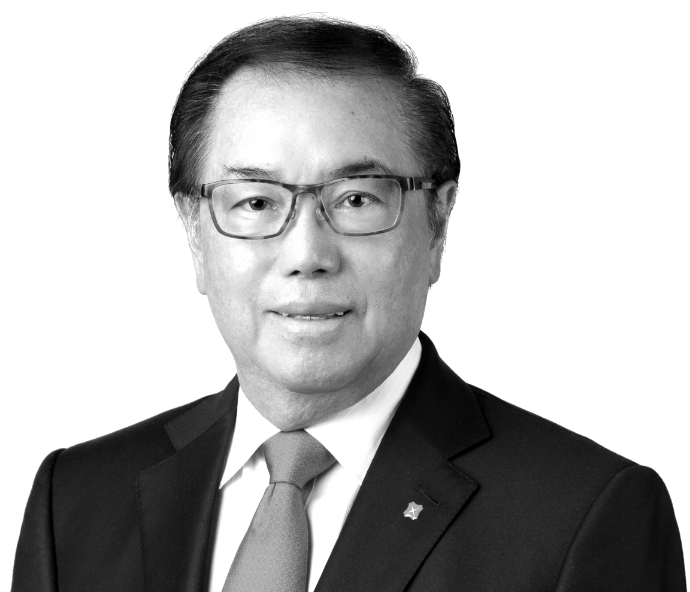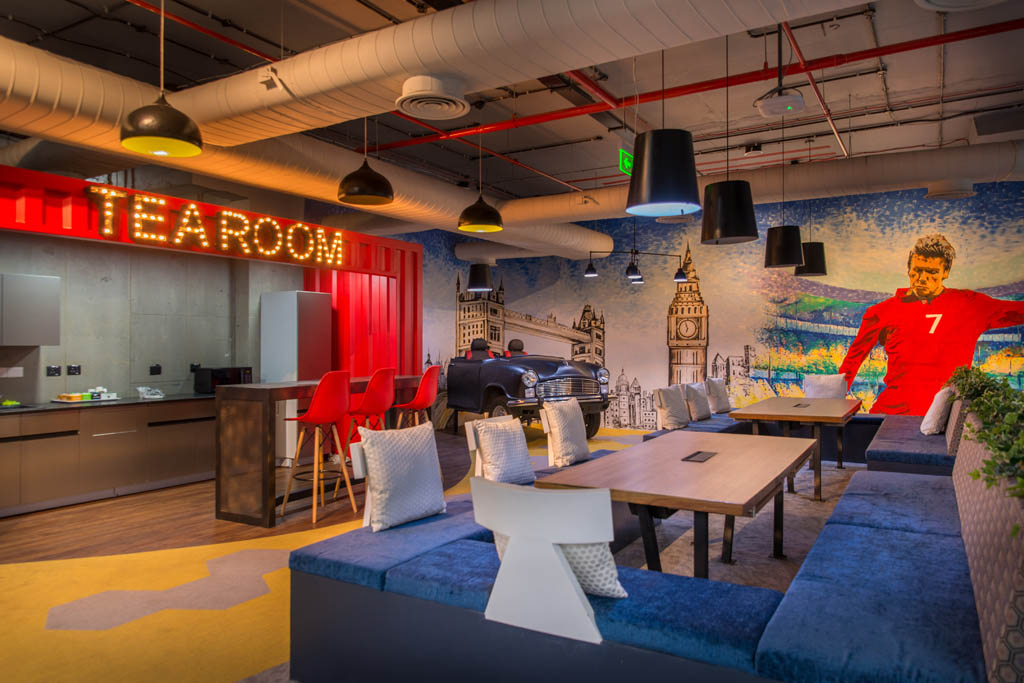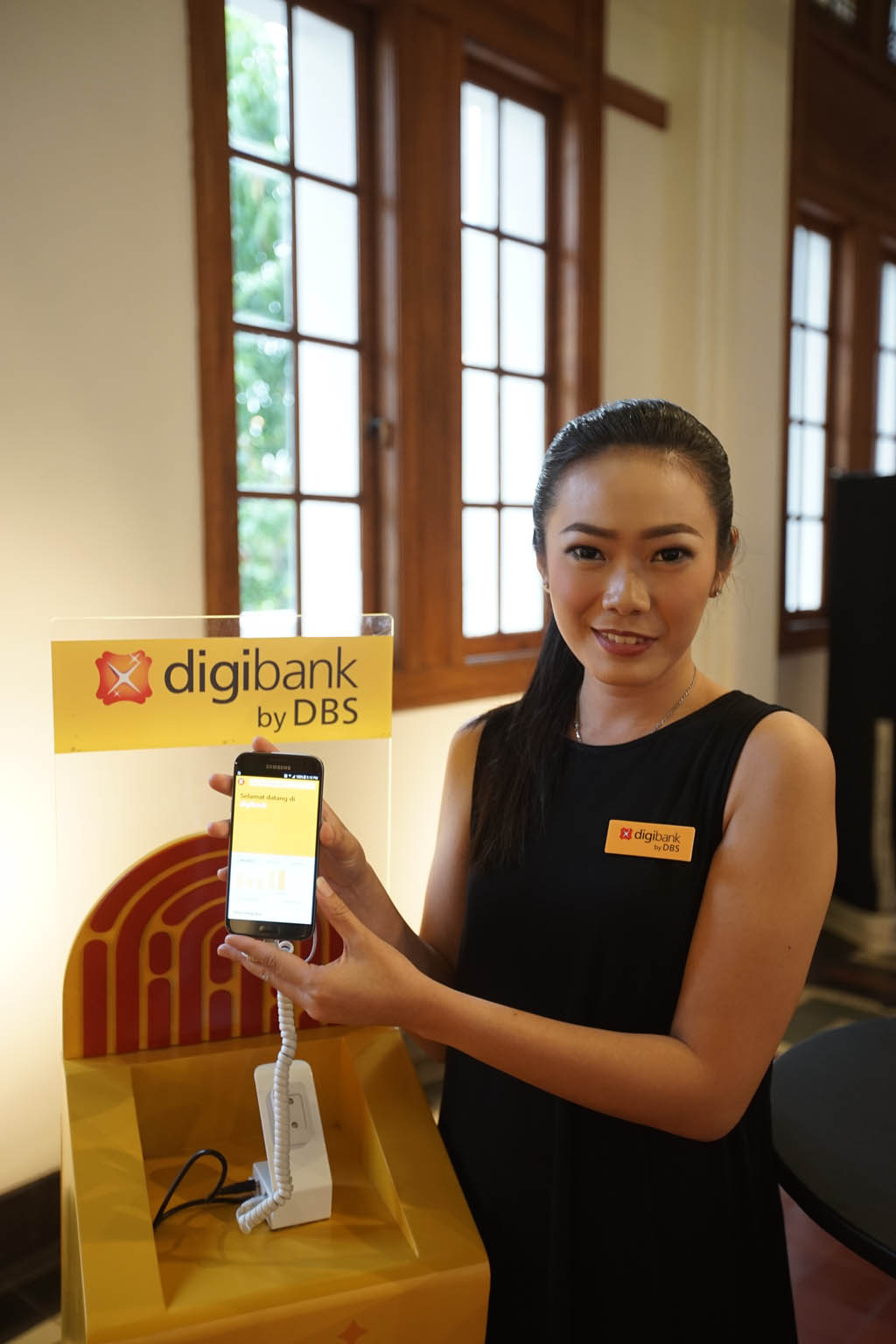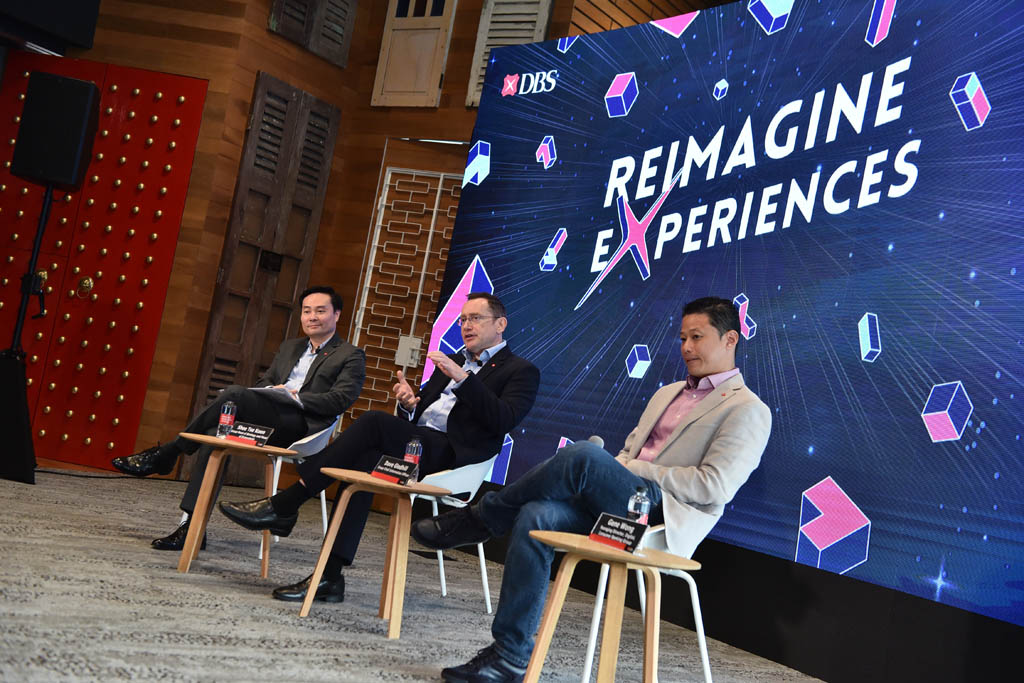Total income
Total income reached a new high, bolstered by growth in loans and fee income.
Letter from the Chairman and CEO
2017 was a great year for DBS’ business franchise and digital transformation.

A strong, resilient franchise
2017 was a great year for DBS’ business franchise. However, it was not without challenges. Low crude oil prices stretched into a third year, exerting significant stress on a number of our customers in the oil and gas sector. With technology continuing to disrupt the business of banking, the need to stay on top of the digital agenda was keenly felt.
Notwithstanding these pressures, DBS turned in a strong performance. Total income reached a new high of SGD 11.9 billion, while net profit increased 4% to a record SGD 4.39 billion. This is despite an 8% increase in net allowances to SGD 1.54 billion as we accelerated the recognition of residual weak oil and gas support service exposures as non-performing assets.
Our market shares remained robust. In Singapore, our share of housing loans rose from 29% to 31%, and our share of credit card receivables increased from 20% to 25%.
We continued to do well in wealth management. Wealth income grew 25% to SGD 2.11 billion, while assets under management rose by 24% to SGD 206 billion. In the institutional banking space, SME income increased by 11% to SGD 1.71 billion.
Cash management income grew 32% to SGD 1.11 billion while trade loans rose 25% to SGD 45 billion.
In addition, we had some franchise-enhancing developments:
- Completed the integration of ANZ’s retail and wealth franchise across five markets. The effort spanned Singapore, Hong Kong, China, Indonesia and Taiwan, and took 15 months, in accordance with schedule. In last year’s letter, we shared that the acquisition was expected to be return on equity (ROE) and earnings accretive one year after completion. In fact, we now project that ANZ will contribute net profit in 2018 that is more than initial projections.
- Received approval to establish a wholly-owned subsidiary (WOS) in India. Today, DBS is the largest Singapore bank in India with 12 branches, and the country’s fifth largest foreign bank by assets. However, to bank certain segments of the economy, such as SMEs, a larger physical presence is required. With WOS status, we will be able to accelerate DBS India’s growth and expand its footprint, to serve a larger customer base.
- Launched digibank, a mobile-only bank, in Indonesia. The groundbreaking proposition is aimed at the large digitally-savvy population in Asia’s third-most populous nation. It follows the introduction of digibank in India in April 2016, which has enabled us to penetrate India’s retail banking market with over 1.8 million new customers acquired.
We also had a watershed year in our digital transformation.
Transformation 2.0: making good progress
In last year’s letter, we touched on the importance of digital in delivering simple, fast and contextual banking to customers. This is all-important in our next phase of growth, and involves being digital to the core, embedding ourselves in the customer’s journey and creating a start-up mindset. Good progress has been made on all three fronts.
Being digital to the core
Being truly digital involves a complete transformation of the bank, from front to back end. To be successful, we have to invest in people and skills differently, re-architect our technology infrastructure in the back end to be cloud-native, have systems and ways of working that shorten the release times
Net profit
Net profit increased 4% to a record SGD 4.39 billion from broad-based growth in business volumes.
cents
Dividend
We proposed a final dividend of 60 cents per share, bringing the full-year ordinary dividend to 93 cents per share, up 55%.
Special dividend
A 50-cent special dividend has been proposed.
of new applications, and enable scalability through ecosystem partnerships.
2017 was a breakthrough year in each of these areas. In 2009, our technology, hardware, data centres, network management and app development were fundamentally outsourced. At the end of 2017, we were 85% insourced. The shift is important because in order to be more digital, it is imperative that we own the technology resources.
At the same time, we moved from legacy technology – big mainframes in large data centres – to cloud-native technology. By the end of 2017, 66% of our applications were cloud-ready. This, coupled with increased usage of microservices and open-source applications, has enabled us to reduce structural infrastructure costs, and at the same time improve resiliency and nimbleness.
Through increased automation, we have been able to increase our release cadence of new applications in the market by close to 10 times, enabling us to constantly learn, test and iterate, the same way big tech does. In addition, we now have a common platform of services and application programming interfaces (APIs) enabling us to integrate best-in-breed technologies and move faster on the front end. In 2017, we launched the world’s largest API platform for a bank. We now have over 180 APIs for Singapore, with more than 60 partners.
Embedding ourselves in the customer’s journey
To become more customer-centric, we have continued to embed ourselves in the customer’s journey. In so doing, we have overturned our approach to customer service by starting from their perspective, rather than the logic and limitations imposed by our systems and processes.
A case in point is the DBS Car Marketplace, which we introduced following the Monetary Authority of Singapore’s proposal to allow banks to operate adjacency businesses. Launched in partnership with sgCarMart and Carro, it is not only Singapore’s largest direct seller-to-buyer car marketplace, but also Singapore’s first online consumer marketplace helmed by a bank.
At launch, the marketplace had some 3,500 direct-owner car listings. An on-site car budget calculator provides the estimated loan amount the buyer is eligible for, and then serves them a list of cars based on their budget. The initiative exemplifies how we are reimagining banking, using digital technology and innovation to seamlessly integrate banking in the lives of customers.
Another example is POSB Smart Buddy, the world’s first in-school wearable tech savings and payments programme. In developing the initiative, we took input from parents who indicated that they wanted to teach their children the value of saving, but did not want the hassle of handling cash. The result was a groundbreaking solution that creates a contactless payments ecosystem within schools, enabling young students to cultivate sensible savings and spending habits in an engaging manner. An accompanying mobile app allows parents to remotely manage their children’s spending and savings, while empowering students to monitor their own finances. Since its official launch in August 2017, more than 30 schools in Singapore have signed up for it.


Creating a start-up mindset
To create a start-up culture and mindset, we have found that learning by doing and learning by partnering are key. We have facilitated this by creating immersion programmes such as sprints, scrums and hackathons. We have also collaborated with schools, universities and start-ups through incubator and accelerator programmes. In the last couple of years, we have conducted over 1,000 experiments in the bank and now have over 15,000 people engaged in innovation programmes.
We have also refurbished our workspaces to encourage collaboration and fresh perspectives, created dedicated areas for design and experimentation, and fostered new project management systems to shorten the trial cycle for new ideas. We have hired user experience professionals and anthropologists, and co-located technology specialists and traditional bankers for better collaboration. Progress has been palpable. Ideas and initiatives are springing up spontaneously from the ground up, generating productivity gains and improving customer experience.
Deeper, Broader and Smarter
Having invested time and resources in digitalising the bank, we have seen visible results in a number of areas:
- Deepened wallet share in the consumer and SME business in our core markets. In Singapore and Hong Kong, where we are a major player, becoming more digital has been key in helping us gain market share and create new income streams. In Singapore, for example, we are the leader in mortgages, auto loans, cards and bancassurance. Our digital strategy has enabled us to grow income from this segment from SGD 4.14 billion in 2015 to SGD 5.22 billion today.
- Broadened our reach in growth markets. In these large geographies, digital has enabled the creation of new distribution models which reduce dependency on expensive brick and mortar outlets. While our consumer and SME franchise in these markets is still nascent, there is good traction in digital customer acquisition with our investments being a bet on the future.
- Improved efficiency of traditionally more high-touch businesses such as large corporate banking and private banking. Digitalisation has helped our teams work smarter, reducing manual processes and increasing productivity. This has enabled us to support higher business volumes, without a commensurate increase in resources.
Sustainability
Sustainability has been at the core of our purpose-driven DNA. From the time of DBS’ and POSB’s founding as the Development Bank of Singapore and “People’s Bank” respectively, we have believed in the importance of good citizenship.
This involves providing responsible banking, creating social impact by giving back to the community through the bank and DBS Foundation, as well as doing our part for the environment and combating climate change.
In September 2015, the United Nations announced a set of 17 Sustainable Development Goals (SDGs) to end poverty, protect the planet and ensure that all people enjoy peace and prosperity as part of a new sustainable development agenda. DBS has chosen to focus on four of the 17 goals:
- SDG 7 – Affordable and Clean Energy
- SDG 8 – Decent Work and Economic Growth
- SDG 12 – Responsible Consumption and Production
- SDG 13 – Climate Action
While we contribute towards the other SDGs, these four have been prioritised because they are where we can make the most positive impact given our heritage, client base, markets, ability to innovate and the strategic business opportunities that are increasingly emerging.
In support of the sustainability agenda, DBS was one of the first Singapore companies to launch a green bond in 2017. In addition, DBS was the first Singapore bank to be included as an index constituent of the FTSE4Good Global Index, a global sustainability index. We were also the first Asian bank and Singapore company to join global renewable energy initiative RE100, and to commit to using 100% renewable energy for our Singapore operations by 2030. The DBS Foundation, which champions social enterprises (SEs) and social innovation, also had an active year. In 2017, the Foundation reached out to more than 4,800 SEs.

Having invested time and resources in digitalising the bank, we have seen visible results.
Dividend
The recent finalisation of the Basel III capital reforms has provided clarity on future regulatory requirements. They have a benign impact on DBS, enabling our capital requirements to be rationalised. In view of this, the Board suspended the scrip dividend with immediate effect. It also determined that the ordinary dividend can be sustained at higher levels and affirmed the policy of increasing it over time in line with earnings growth.
The Board has proposed a final dividend of 60 cents per share for approval at the forthcoming annual general meeting. This will bring the full-year ordinary dividend to 93 cents per share, which represents an increase of 55% over the previous year. In addition, a special dividend of 50 cents per share has been proposed as a one-time return of the capital buffers that had been built up and to mark the 50th anniversary of DBS.
Acknowledgements
We would like to express our gratitude to Bart Broadman, who is stepping down as board member in April 2018, for his invaluable contributions over the years. At the same time, we would like to thank our shareholders and customers for their continued support, and to acknowledge our employees and the Board for their hard work throughout the year.
Going forward
Having focused on digital transformation over the last three years, we showcased this work to the investor community in November 2017. We also shared a methodology we developed on measuring digital’s contribution to our income and profitability. The reception to this was highly favourable, with some analysts acknowledging that DBS’ digital strategy is one of the most comprehensive in the world. Our market capitalisation rose 44% in 2017, making DBS the most valuable company in Southeast Asia.
We dare not rest on our laurels. While the global economy is stronger than it has been for a number of years, there are a number of stress points that bear watching. They include continuing geopolitical uncertainty as well as growing trade friction.
In addition, the pace of change in our industry remains relentless, and it is imperative that we continue to further our digital agenda in the coming year. We have good momentum.
2018 is DBS’ 50th anniversary. As the former Development Bank of Singapore, we have always been a different kind of bank. From the early days, our people have been trailblazers and path-breakers. With DBS’ mandate to finance Singapore’s industrialisation, we also had a mission that was bigger than ourselves. Today, that DNA – to break boundaries and innovate, as well as be purpose-driven in all that we do – continues to be very much a part of us. The Development Bank of Singapore is increasingly making our presence felt as the Digital Bank of Singapore.
Peter Seah Lim Huat
Chairman
DBS Group Holdings
Piyush Gupta
CEO
DBS Group Holdings
Business Model
This section discusses our business model and provides details on how we use our resources and distribute value to our stakeholders.
Performance
This section provides information on our financials, 2017 priorities and performance by customer segments.
Governance and Risk Management
This section details our commitment to sound and effective governance, risk management and sustainability.